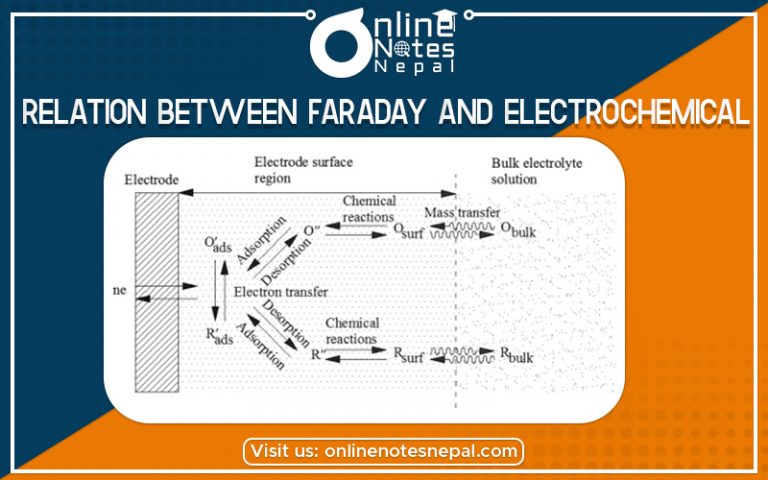Published by: Nuru
Published date: 25 Jun 2021

Faraday is the quantity of charge required to deposit one gram equivalent of the substance. One faraday is nearly equal to 96,500 coulombs.
1 Faraday deposits 1gm equivalent of a substance
or, 96500-coulomb deposits 1gm equivalent of a substance
or, 96500-coulomb deposits E of substance.
Therefore 1-coulomb deposit of E/9500 substance.
Where, E is the chemical Equivalent but the weight of substance deposited by one-coulomb charge is electrochemical equivalent, so,
i.e. Electrochemical equivalent = E / 96500
or, Z = E / F
Also, Z = E / F..(I)
This is the required expression for the relation between faraday and electrochemical equivalent.
Conductance:– The current flowing through a conductor is given by,
I = V/R
Where,
I= current in Ampere
V= voltage in volt
R= Resistance in ohm(Ω)
The reciprocal of resistance is called conductance. It is denoted by ‘L’.
i,e. Conductance = 1 / Resistance
Nowadays it is measured in siemens but preciously it was also used in per ohm or mho
Specific conductance:-
The resistance of a conductor is directly proportional to its length and inversely proportional to its cross-sectional area.
Mathematically, it can be written as
R α l………….(i)
R α 1/A……….. (ii)
Combining equation (i) and (ii) we get,
pic
where ϱ in the proportionality constant called resistivity or specific resistance.
The reciprocal of specific resistance is called specific conductance, denoted by (k) kappa.
pic
In the CGS system, it is measured in ohm-1cm-1 but nowadays it is also measured in siemen cm-1. Thus, specific conductance of a solution is defined as the conductance of solution confined between two parallel electrodes each of 1cm2 area separated by 1cm apart.
The specific conductance of the solution depends on the concentration of the solution but not on the shape or size of the electrodes.